Are you struggling to choose the perfect dry type transformer for your project? You're not alone. Many engineers and project managers find themselves overwhelmed by the myriad of options and technical specifications. But what if you could navigate this complex decision with confidence and ease?
Selecting the right dry type transformer requires evaluating factors like capacity, voltage, cooling method, and environmental conditions. For commercial projects, focus on noise and size. Industrial applications need robust designs for heavy loads. Renewable energy installations require weather resistance and bi-directional power flow capabilities.
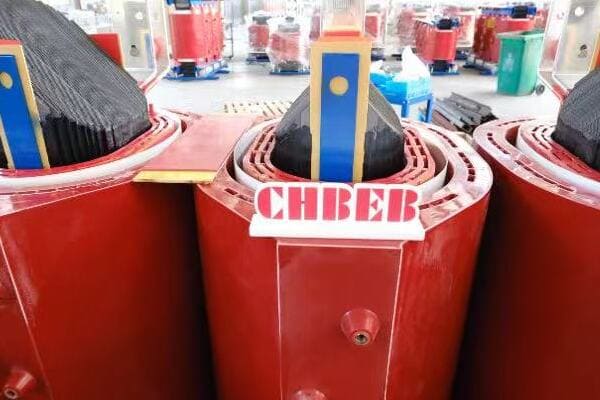
In this comprehensive guide, I'll walk you through the key factors to consider when selecting a dry type transformer. Whether you're working on a commercial building, an industrial facility, or a renewable energy installation, you'll learn how to identify the right transformer that meets your specific needs. Let's dive in and demystify the selection process together.
Why Choose Dry Type Transformers for Modern Projects?
Have you ever wondered why dry type transformers are becoming increasingly popular in modern projects? From office buildings to renewable energy installations, these transformers are often the go-to choice. But what makes them so appealing, and how do they compare to traditional oil-filled transformers?
**Dry type transformers offer several advantages for modern projects:
- No oil = safer for indoor/public spaces
- Lower fire risk & minimal maintenance
- Compact and quiet; ideal for confined environments
- Environmentally friendly (no oil leakage risk)**

Exploring the Benefits of Dry Type Transformers
Let's delve deeper into why dry type transformers are an excellent choice for many applications:
1. Enhanced Safety
Dry type transformers:
- Eliminate the risk of oil fires or spills
- Are suitable for installation near populated areas
- Reduce the need for extensive fire suppression systems
I once worked on a project retrofitting an old office building with a new electrical system. The choice of dry type transformers allowed us to install them in the basement, close to the main distribution panel, without concerns about oil leaks or fire hazards. This significantly simplified the installation and improved overall system efficiency.
2. Low Maintenance Requirements
Key maintenance benefits:
- No need for regular oil testing or replacement
- Reduced risk of coolant-related failures
- Simpler inspection and cleaning procedures
3. Compact and Quiet Operation
Advantages in space-constrained environments:
- Smaller footprint compared to oil-filled units
- Lower noise levels, ideal for urban settings
- Easier to integrate into building designs
4. Environmental Friendliness
Eco-friendly aspects:
- No risk of oil contamination to soil or water
- Often made with recyclable materials
- Lower end-of-life disposal costs and complexity
Here's a comparison table of dry type vs. oil-filled transformers:
| Aspect | Dry Type Transformer | Oil-Filled Transformer |
|---|---|---|
| Safety | High (no flammable oil) | Moderate (fire risk) |
| Maintenance | Low | Higher (oil monitoring) |
| Environmental Risk | Minimal | Potential oil leaks |
| Size | Compact | Larger due to oil tank |
| Noise Level | Lower | Higher |
| Indoor Use | Ideal | Requires special precautions |
In my experience, the choice of dry type transformers often leads to significant long-term benefits. I recall a project for a data center where we initially considered oil-filled transformers due to their lower upfront cost. However, after a comprehensive risk assessment, we opted for dry type units. The reduced fire risk and simplified maintenance not only improved the facility's safety profile but also resulted in lower insurance premiums and operational costs over time.
The environmental advantages of dry type transformers became particularly evident in a recent project near a sensitive ecological area. The absence of oil eliminated concerns about potential contamination, making it much easier to obtain environmental approvals and ensuring peace of mind for both the client and local authorities.
For urban installations, the compact size and quiet operation of dry type transformers are invaluable. In a recent high-rise development project, we were able to install dry type units on each floor, optimizing power distribution efficiency without compromising usable space or creating noise disturbances for residents.
The reliability of dry type transformers in harsh environments is another key advantage. I worked on an industrial project in a coastal area with high humidity and salt content in the air. The dry type transformers we installed have shown excellent resistance to these corrosive conditions, maintaining their performance without the need for special protective enclosures that would have been necessary for oil-filled units.
Lastly, the trend towards green building certifications is making dry type transformers increasingly attractive. In a recent LEED-certified office complex project, the use of dry type transformers contributed to higher scores in the materials and resources category, thanks to their recyclable components and lower environmental impact throughout their lifecycle.
Choosing dry type transformers for modern projects offers a combination of safety, reliability, environmental friendliness, and operational efficiency that is hard to match with traditional oil-filled units. While they may have a higher initial cost in some cases, the long-term benefits in terms of reduced maintenance, enhanced safety, and environmental compatibility often make them the most cost-effective and responsible choice for a wide range of applications. As we continue to prioritize safety, sustainability, and efficiency in our built environments, the role of dry type transformers is likely to become even more prominent in future projects.
Key Specs to Consider When Selecting?
Are you feeling overwhelmed by the technical specifications when choosing a dry type transformer? You're not alone. Many professionals struggle to prioritize the numerous parameters involved. But what if you had a clear roadmap of the most critical factors to consider?
**Checklist of key specifications for selecting dry type transformers:
✅ Rated capacity (kVA)
✅ Primary & secondary voltage
✅ Cooling method: AN (Air Natural) or AF (Air Forced)
✅ Temperature rise & insulation class (Class F/H)
✅ Protection rating (IP20/IP23/IP54)
✅ Certification: IEC 60076-11, UL1562, etc.**

Diving Deeper into Transformer Selection Parameters
Let's explore these critical specifications in more detail:
1. Rated Capacity (kVA)
Considerations for capacity selection:
- Current load requirements
- Future expansion plans
- Peak load handling capability
I once worked on a project where the client insisted on a transformer barely meeting their current needs. Within two years, they had to replace it due to expanded operations. Now, I always advise including at least a 20% capacity buffer for future growth.
2. Voltage Ratings
Key voltage considerations:
- Primary voltage matching grid supply
- Secondary voltage suitable for connected equipment
- Tap changer requirements for voltage regulation
3. Cooling Method
Factors influencing cooling choice:
- Load profile (steady vs variable)
- Environmental conditions
- Space constraints and noise limitations
4. Temperature Rise and Insulation Class
Important thermal considerations:
- Expected ambient temperature range
- Insulation life and performance requirements
- Overload capacity needs
Here's a table summarizing common insulation classes and temperature rises:
| Insulation Class | Average Winding Temperature Rise | Hot Spot Temperature Rise |
|---|---|---|
| Class F | 115°C | 140°C |
| Class H | 140°C | 165°C |
In my experience, choosing the right insulation class is crucial for long-term reliability. I recall a project in a hot, industrial environment where we initially specified Class F insulation. After analyzing the actual operating conditions, we upgraded to Class H, which significantly extended the transformer's expected lifespan under the harsh thermal conditions.
5. Protection Rating (IP Code)
Protection considerations:
- Indoor vs outdoor installation
- Presence of dust, moisture, or corrosive elements
- Accessibility and maintenance requirements
6. Certifications and Standards
Key standards to consider:
- IEC 60076-11 for general requirements
- UL 1562 for safety in North American markets
- Regional or industry-specific standards
The importance of proper certification cannot be overstated. In a recent international project, we had to ensure compliance with both IEC and UL standards. This dual certification, while challenging to achieve, opened up global market opportunities for our client.
Selecting the right protection rating is crucial for ensuring transformer longevity. I worked on a project for a coastal industrial facility where we specified IP54-rated transformers due to the corrosive, salt-laden environment. This decision, while increasing initial costs, has proven invaluable in maintaining reliable operation in the challenging conditions.
The choice of cooling method can significantly impact both performance and maintenance requirements. In a data center project, we opted for AF (Air Forced) cooling despite its higher complexity. The improved heat dissipation allowed for a more compact design and better handling of variable loads, crucial in the dynamic data center environment.
Voltage regulation capabilities are often overlooked but can be critical. In a recent renewable energy project, we incorporated transformers with on-load tap changers to manage the variable output from solar panels. This feature was essential for maintaining stable grid connection and optimizing energy transfer.
Lastly, the trend towards smart grids is influencing transformer specifications. I'm currently working on a project integrating dry type transformers with advanced monitoring capabilities. These units include sensors for temperature, partial discharge, and even gas analysis, providing real-time data for predictive maintenance and enhanced reliability.
Understanding and carefully considering these key specifications is crucial for selecting the right dry type transformer for your project. Each parameter plays a vital role in ensuring the transformer's performance, efficiency, and longevity. By thoroughly evaluating these factors in the context of your specific application and future needs, you can make an informed decision that balances technical requirements, cost-effectiveness, and long-term reliability. Remember, the right choice often involves looking beyond immediate needs to consider future growth and changing operational demands.
Best Transformer Type for Commercial Use?
Are you planning a commercial project and wondering which dry type transformer is best suited for your needs? You're not alone. Many architects and electrical engineers grapple with this decision. But what specific features should you prioritize for commercial applications, and how do they differ from other settings?
**Common needs for commercial dry type transformers:
- Quiet operation for hospitals, offices
- Compact size for space-constrained basements
- Prefer AN cooling for steady loads
- Fire-resistant designs (F1 class insulation)**
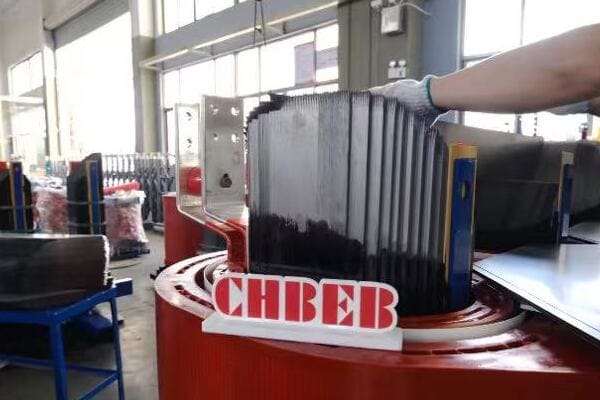
Selecting the Ideal Transformer for Commercial Projects
Let's explore the key considerations for commercial transformer applications:
1. Noise Reduction
Critical in commercial settings:
- Low noise operation for office environments
- Special designs for hospitals and educational institutions
- Consideration of local noise regulations
I once worked on a project for a high-end office building where noise levels were a top priority. We implemented a specially designed low-noise transformer with additional sound dampening features. The result was a near-silent operation that met the client's stringent requirements for their premium office space.
2. Compact Design
Space-saving considerations:
- Basement or utility room installations
- Integration with building aesthetics
- Vertical designs for minimal footprint
3. Cooling Method Selection
Factors influencing cooling choice:
- Steady load profiles typical in commercial settings
- Preference for AN (Air Natural) cooling when possible
- AF (Air Forced) for higher capacity needs
4. Fire Safety and Resistance
Critical safety features:
- F1 class insulation for enhanced fire resistance
- Compliance with building fire safety codes
- Integration with building fire suppression systems
Here's a comparison table of transformer features for different commercial applications:
| Application | Noise Requirement | Size Constraint | Preferred Cooling | Special Features |
|---|---|---|---|---|
| Office Building | Very Low | High | AN | Low EMI emission |
| Hospital | Ultra Low | Moderate | AN/AF | Shielding for sensitive equipment |
| Shopping Mall | Moderate | High | AF | High overload capacity |
| School | Low | Moderate | AN | Enhanced safety features |
In my experience, the choice of transformer for commercial applications often involves balancing multiple factors. I recall a project for a mixed-use development where we needed to install transformers to serve both retail spaces and residential areas. We opted for a hybrid approach, using ultra-quiet AN-cooled units for residential floors and more robust AF-cooled transformers for the commercial sections. This strategy allowed us to optimize performance and noise levels for each area.
The importance of fire safety in commercial transformers cannot be overstated. In a recent project for a high-rise office building, we implemented F1 class insulated transformers with additional fire-resistant enclosures. This not only met stringent local fire codes but also provided peace of mind for the building owners and tenants.
Space constraints are a common challenge in commercial projects. I worked on a renovation of an historic building where we had to fit new transformers into an existing, cramped basement. By selecting compact, vertically oriented dry type units, we were able to significantly upgrade the building's electrical capacity without major structural changes.
EMI (Electromagnetic Interference) is an often-overlooked consideration in commercial settings. In a project for a tech company's headquarters, we had to carefully select and position transformers to minimize EMI that could affect sensitive electronic equipment. This involved using specially shielded units and strategic placement within the building.
Energy efficiency is becoming increasingly important in commercial transformer selection. In a recent LEED-certified office project, we conducted a detailed lifecycle cost analysis comparing standard and high-efficiency transformers. Despite a higher initial cost, the high-efficiency units were chosen due to significant long-term energy savings, aligning with the building's sustainability goals.
The trend towards smart buildings is influencing commercial transformer requirements. I'm currently involved in a project integrating dry type transformers with building management systems. These smart transformers provide real-time data on power quality and usage, enabling more efficient energy management across the entire commercial complex.
Lastly, the importance of scalability in commercial projects cannot be underestimated. In a phased office park development, we implemented a modular transformer system that could be easily expanded as new buildings were added. This forward-thinking approach provided flexibility for future growth while optimizing initial costs.
Selecting the best transformer type for commercial use requires careful consideration of factors such as noise levels, size constraints, fire safety, and specific application needs. By prioritizing these aspects and understanding the unique requirements of commercial environments, you can choose a transformer that not only meets current needs but also provides the flexibility and performance required for long-term success. Remember, in commercial settings, the right transformer choice can significantly impact both operational efficiency and tenant satisfaction, making it a critical decision in the overall building design and management strategy.
Industrial Application Guide: What to Watch For?
Are you tasked with selecting transformers for an industrial project? The unique demands of industrial environments can make this choice challenging. But what specific factors should you prioritize to ensure your transformer can handle the rigors of industrial use?
**Industrial needs checklist:
- Support for heavy or motor-start loads
- AF cooling preferred in high-temp environments
- Higher mechanical strength & thermal endurance
- Dust-proof enclosures (IP54 or above)**

Key Considerations for Industrial Transformers
Let's explore the critical aspects of transformers for industrial use:
1. Load Handling Capability
Industrial transformers must:
- Manage high inrush currents from motor starts
- Handle sustained overloads during peak production
- Adapt to rapidly changing load profiles
I once worked on a project for a large automotive plant where the transformer had to handle frequent welding machine operations. The high, short-duration current spikes required a transformer with exceptional overload capacity and rapid heat dissipation.
2. Cooling System Efficiency
Cooling considerations include:
- AF (Air Forced) systems for high-load applications
- Efficient heat dissipation in confined spaces
- Ability to operate in high ambient temperatures
3. Mechanical Robustness
Key features for industrial environments:
- Reinforced core and winding construction
- Vibration-resistant design
- Enhanced protection against physical impacts
4. Environmental Protection
Factors to consider:
- Dust and moisture resistance (high IP ratings)
- Corrosion protection for harsh environments
- Ability to withstand extreme temperatures
Here's a table comparing transformer features for different industrial applications:
| Application | Key Feature | Cooling Method | Special Requirement |
|---|---|---|---|
| Heavy Manufacturing | High overload capacity | AF | Robust mechanical design |
| Chemical Plant | Corrosion resistance | AF | Sealed design (IP55+) |
| Food Processing | Hygienic design | AN/AF | Stainless steel enclosure |
| Mining Operations | Dust resistance | AF | IP65 rating, portable design |
In my experience, the choice of transformer for industrial applications often involves balancing multiple factors. I recall a project for a steel mill where we needed a transformer that could handle both the high continuous loads of the rolling mill and the periodic surges from the electric arc furnaces. We opted for an AF-cooled unit with enhanced short-circuit strength and an advanced thermal management system. This combination provided the necessary robustness and flexibility for the demanding application.
The importance of proper sizing cannot be overstated in industrial settings. In a recent expansion project for a chemical plant, we had to carefully consider not just the current load but also the planned future additions. We ended up selecting a transformer with 30% extra capacity, which proved invaluable when the plant expanded faster than initially projected.
Harmonic mitigation is a critical concern in many industrial applications. I worked on a project for a large printing facility where the numerous variable frequency drives were causing significant harmonic distortion. We implemented a transformer with a specialized winding design and additional filtering to manage these harmonics, greatly improving power quality and equipment longevity.
Environmental considerations can significantly impact transformer selection. In a project for a coastal industrial facility, we had to design a custom enclosure with enhanced corrosion resistance and specialized sealing to protect against salt-laden air and high humidity. This attention to environmental factors was crucial for ensuring long-term reliability in the harsh conditions.
The integration of transformers with industrial control systems is becoming increasingly important. I'm currently involved in a project implementing smart transformers in a large manufacturing complex. These units are equipped with advanced sensors and communication capabilities, allowing real-time monitoring and integration with the plant's overall energy management system. This integration not only improves operational efficiency but also enables predictive maintenance, reducing downtime.
Energy efficiency is a growing concern in industrial transformer selection. In a recent project for an energy-intensive process industry, we conducted a detailed total cost of ownership analysis. Despite a higher initial cost, we chose a high-efficiency transformer with amorphous core technology. The energy savings over the transformer's lifespan were projected to be substantial, aligning with the client's sustainability goals and offering significant long-term cost benefits.
Noise considerations can be critical in certain industrial settings. I once worked on a project for a food processing plant where strict noise regulations applied. We had to carefully select a transformer with enhanced noise reduction features, including special core construction and enclosure design. Meeting these noise requirements while maintaining the necessary performance characteristics required close collaboration with the manufacturer.
Lastly, the trend towards modular and scalable industrial systems is influencing transformer design. In a recent project for a rapidly growing technology manufacturing facility, we implemented a modular transformer system. This approach allowed for easier capacity expansion and provided the flexibility to reconfigure the power distribution as the facility's needs evolved.
Selecting the right transformer for industrial applications requires a thorough understanding of the specific operational demands and environmental conditions. By carefully considering factors such as load profile, mechanical stresses, cooling requirements, and power quality needs, you can choose a transformer that not only meets current demands but also provides the flexibility and reliability needed for future growth. Remember, in industrial settings, the cost of downtime often far outweighs the initial investment in a high-quality, well-specified transformer.
Renewable Energy Projects: Solar, Wind, Storage?
Are you venturing into the world of renewable energy and wondering about the specific transformer requirements for these projects? You're not alone. Many engineers find themselves puzzled by the unique challenges posed by solar, wind, and energy storage systems. But what exactly makes transformers for renewable energy projects different, and how can you ensure you're making the right choice?
**Typical requirements for renewable energy transformers:
- Bi-directional power flow support
- Weatherproof design for outdoor/pole-mounting
- Resistance to high humidity and heat
- ONAN/AF cooling depending on system load**

Key Considerations for Renewable Energy Transformers
Let's explore the critical aspects of transformers for different renewable energy applications:
1. Solar Power Projects
Solar transformers need:
- Ability to handle variable DC input from inverters
- High efficiency at partial loads
- Thermal management for hot, dusty environments
I once worked on a large solar farm project where we implemented specially designed transformers with enhanced cooling systems. The units were optimized for the farm's daytime-only generation profile, with efficient operation at varying loads as solar intensity changed throughout the day.
2. Wind Energy Systems
Wind power transformers require:
- Robust design for nacelle or base installation
- Ability to handle rapidly fluctuating inputs
- Compact size for offshore applications
3. Energy Storage Facilities
Transformers for storage systems need:
- Bidirectional power flow capability
- Fast response to charge/discharge cycles
- Integration with battery management systems
4. General Renewable Energy Requirements
Common features across renewable applications:
- Compliance with grid codes for renewable integration
- Remote monitoring and diagnostic capabilities
- Environmentally friendly designs (e.g., biodegradable fluids)
Here's a comparison table of transformer requirements for different renewable energy applications:
| Application | Key Feature | Typical Size Range | Special Requirement |
|---|---|---|---|
| Solar Farm | High efficiency at partial loads | 500 kVA - 10 MVA | Inverter compatibility |
| Wind Farm | Robust, compact design | 2 MVA - 50 MVA | Nacelle or base mounting options |
| Energy Storage | Bidirectional power flow | 1 MVA - 100 MVA | Rapid response to load changes |
| Hybrid Systems | Flexible operation | Varies | Advanced control integration |
In my experience, the selection of transformers for renewable energy projects often involves unique challenges. I recall a project for a large-scale solar farm in a desert environment. The extreme heat and dust posed significant cooling challenges. We implemented a custom AF cooling system with specially designed filters to prevent dust ingress. The transformers were also equipped with advanced thermal monitoring to ensure optimal performance in the harsh conditions.
The variability of renewable energy sources necessitates careful consideration of transformer efficiency across a wide load range. In a recent wind farm project, we selected transformers with amorphous metal cores. While more expensive initially, these units provided superior efficiency at the variable loads typical of wind generation, resulting in significant energy savings over the project's lifespan.
For offshore wind projects, the transformer's size and weight are critical factors. I worked on an offshore wind farm where space in the nacelle was at a premium. We utilized a compact, dry-type transformer design that minimized size and weight while still meeting the stringent marine environment requirements. The use of biodegradable insulating fluids also mitigated environmental risks.
Energy storage projects present unique challenges due to their bidirectional power flow. In a recent large-scale battery storage facility, we implemented transformers with specialized winding designs to handle the frequent transitions between charging and discharging states. The units were also equipped with advanced cooling systems to manage the heat generated during high-power discharge cycles.
The integration of transformers with renewable energy control systems is becoming increasingly important. I'm currently involved in a project developing smart transformers for a hybrid solar-wind-storage facility. These units incorporate advanced sensors and communication interfaces, allowing real-time adjustment of power flow and voltage levels to optimize overall system performance.
Environmental considerations are paramount in renewable energy projects. In a recent solar farm installation in an environmentally sensitive area, we used transformers filled with natural ester fluids instead of traditional mineral oil. This biodegradable option reduced the environmental risk and aligned with the project's overall sustainability goals.
Grid compliance is a critical factor in renewable energy transformer selection. I worked on a project where we had to carefully design the transformer's impedance and tap range to meet stringent grid code requirements for fault ride-through capability and voltage support. This ensured that the renewable energy facility could contribute to grid stability rather than compromising it.
Lastly, the trend towards distributed energy resources is influencing transformer design for renewables. In a recent community solar project, we implemented multiple smaller transformers instead of a single large unit. This modular approach provided greater flexibility and reliability, allowing sections of the solar farm to remain operational even if one transformer required maintenance.
Selecting the right transformer for renewable energy projects requires a deep understanding of the unique challenges posed by these dynamic and often remote power generation systems. By focusing on key aspects such as efficiency across variable loads, robust design for harsh environments, and smart integration capabilities, you can choose a transformer that not only meets the immediate needs of your renewable energy project but also provides the flexibility and reliability required for long-term success. As the renewable energy sector continues to evolve, transformers play a crucial role in efficiently and safely integrating these clean energy sources into our power grids.
Compliance and Environmental Standards?
Are you finding it challenging to navigate the complex world of compliance and environmental standards for dry type transformers? You're not alone. Many professionals struggle to keep up with the ever-evolving regulations. But what are the key standards you need to know, and how can you ensure your projects meet global environmental requirements?
**Recommended standards & safety focus:
- IEC 60076-11 for dry type transformers
- RoHS / REACH environmental requirements
- Fire behavior class F1 (per IEC 60695)
- Use halogen-free insulation and low-smoke materials**
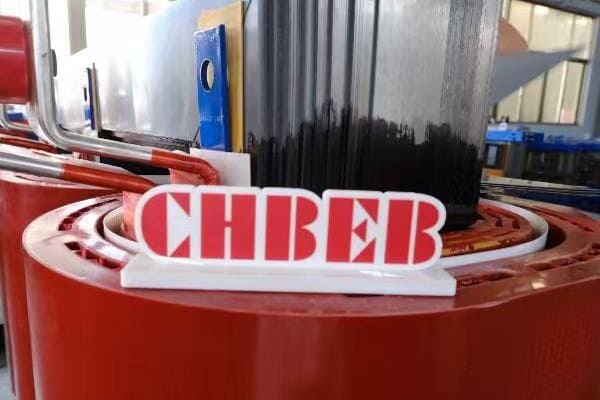
Navigating Compliance and Environmental Standards
Let's explore these standards and compliance requirements in more detail:
1. International Electrotechnical Commission (IEC) Standards
Key IEC standards include:
- IEC 60076-11: Specific requirements for dry-type transformers
- IEC 60076-12: Loading guide for dry-type power transformers
- IEC 60076-16: Transformers for wind turbine applications
I once worked on a project exporting transformers to multiple countries. Ensuring compliance with IEC standards was crucial for gaining acceptance in diverse markets. We had to carefully review and test against each relevant IEC standard to ensure global compatibility.
2. Environmental Regulations
Critical environmental standards:
- RoHS (Restriction of Hazardous Substances)
- REACH (Registration, Evaluation, Authorization and Restriction of Chemicals)
- Various national environmental protection laws
3. Fire Safety Standards
Important fire safety considerations:
- IEC 60695: Fire hazard testing
- F1 class insulation for enhanced fire resistance
- Local building codes and fire safety regulations
4. Energy Efficiency Regulations
Key efficiency standards:
- EU Ecodesign Directive for transformers
- US Department of Energy (DOE) efficiency standards
- China Energy Label (CEL) requirements
Here's a comparison table of key global standards:
| Standard | Region | Focus | Key Requirements |
|---|---|---|---|
| IEC 60076-11 | Global | Dry-Type Transformer Design | Comprehensive specifications for dry-type units |
| RoHS | Europe | Hazardous Substances | Limits on use of specific hazardous materials |
| REACH | Europe | Chemical Safety | Registration and restriction of chemicals |
| F1 Class (IEC 60695) | Global | Fire Safety | Specific fire behavior requirements |
| DOE 10 CFR Part 431 | USA | Energy Efficiency | Minimum efficiency levels for distribution transformers |
In my experience, navigating these standards requires a comprehensive approach. I recall a project where we were designing transformers for a multinational corporation with installations across three continents. We had to create a compliance matrix that cross-referenced IEC, regional, and local standards to ensure our designs met all relevant requirements in each location.
Environmental regulations like RoHS and REACH have significant implications for transformer design and material selection. I worked on a project where we had to completely redesign our insulation system to eliminate certain restricted substances. While challenging, this process led to the development of a more environmentally friendly transformer that actually performed better in several key areas.
Fire safety standards are becoming increasingly stringent, especially for indoor installations. In a recent high-rise project, we had to meet both IEC and local fire code requirements. This led us to implement F1 class insulation and additional fire-resistant barriers, significantly enhancing the safety profile of the installation.
Energy efficiency standards are driving innovation in transformer design. I'm currently involved in a large-scale grid modernization project where energy efficiency is a top priority. We're implementing amorphous core technology and advanced winding designs to meet and exceed the latest efficiency regulations, resulting in significant long-term energy savings for the utility.
The trend towards eco-friendly materials is influencing compliance strategies. In a recent project, we used bio-based insulating fluids and recyclable materials in our transformer design. This not only helped meet environmental regulations but also aligned with the client's corporate sustainability goals.
Smart grid compatibility is becoming an important aspect of compliance. I recently worked on a project where we had to ensure our transformers met both traditional standards and new requirements for data communication and cybersecurity. This dual compliance was essential for integration into a modern, intelligent power distribution system.
Lastly, the importance of lifecycle assessment in environmental compliance is growing. I'm seeing increased interest in standards that address the entire lifecycle of transformers, from raw material sourcing to end-of-life recycling. This holistic approach to environmental compliance is likely to become more prevalent in the coming years.
Navigating compliance and environmental standards for dry type transformers is a complex but crucial task. It requires a thorough understanding of international standards like IEC, as well as regional regulations on energy efficiency and environmental protection. By staying informed about these standards and proactively addressing compliance requirements, engineers and project managers can ensure their transformer projects meet global environmental standards while also optimizing performance and reliability. As regulations continue to evolve, particularly in response to climate change and sustainability concerns, maintaining up-to-date knowledge and adaptable design practices will be key to successful and compliant transformer projects worldwide.
Cost vs Value: What Matters in Total Ownership?
Are you struggling to balance the upfront costs of dry type transformers against their long-term value? You're not alone. Many decision-makers find themselves torn between budget constraints and the desire for quality and efficiency. But what factors should you really consider when evaluating the total cost of ownership, and how can you make a choice that offers the best value over time?
**Evaluation dimensions for total ownership cost:
Factor | Initial Cost | Lifetime Value
Transformer with AF | Medium | High (overload tolerance)
Basic AN type | Low | Moderate (if stable loads)
Premium F1 class | High | High (for safety-driven environments)**
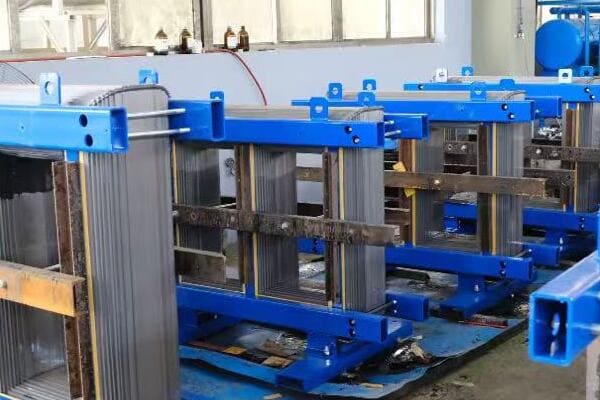
Understanding Total Cost of Ownership for Transformers
Let's explore the key factors that influence the total cost of ownership:
1. Initial Purchase Price
Considerations include:
- Transformer capacity and specifications
- Cooling method (AN vs AF)
- Special features (e.g., F1 class insulation)
I once worked on a project where the client initially opted for the lowest-cost transformer option. Within three years, they faced efficiency issues and had to upgrade, ultimately spending more than if they had chosen a higher-quality unit from the start.
2. Energy Efficiency and Operational Costs
Factors affecting long-term costs:
- Core and winding losses
- Efficiency at various load levels
- Energy costs in the installation location
3. Maintenance and Reliability
Long-term considerations:
- Frequency and cost of required maintenance
- Expected lifespan of the transformer
- Reliability and potential downtime costs
4. Environmental and Safety Factors
Additional value considerations:
- Reduced environmental risks (e.g., no oil leaks)
- Enhanced fire safety (especially with F1 class)
- Potential insurance premium reductions
Here's a detailed comparison table of different transformer types:
| Aspect | Basic AN Type | AF Cooling | Premium F1 Class |
|---|---|---|---|
| Initial Cost | Low | Medium | High |
| Energy Efficiency | Good | Better | Best |
| Maintenance Needs | Low | Moderate | Low |
| Overload Capacity | Limited | Good | Excellent |
| Safety Features | Standard | Enhanced | Superior |
| Typical Lifespan | 20-25 years | 25-30 years | 30+ years |
| Best For | Stable, low-load environments | Variable loads, industrial use | Critical installations, high-safety needs |
In my experience, the true value of a transformer often becomes apparent long after the initial purchase. I recall a project for a data center where we recommended a premium F1 class transformer despite its higher upfront cost. The enhanced safety features not only provided peace of mind but also resulted in significant insurance savings and avoided potential downtime costs, justifying the investment within the first few years of operation.
Energy efficiency is a critical factor in total ownership cost. In a recent industrial project, we conducted a detailed lifecycle cost analysis comparing standard and high-efficiency transformers. Despite a 20% higher initial cost, the high-efficiency unit was projected to save over $100,000 in energy costs over its 25-year lifespan. This analysis was crucial in convincing the client to invest in the more efficient option.
Maintenance costs can vary significantly between different transformer types. I've seen cases where the seemingly cost-effective choice of a basic AN transformer led to higher long-term expenses due to more frequent maintenance needs in a dusty environment. In contrast, an AF unit with better filtration required less frequent servicing, resulting in lower total maintenance costs over time.
The value of reliability cannot be overstated, especially in critical applications. In a hospital project I consulted on, we opted for a premium transformer with advanced monitoring capabilities. While more expensive initially, its ability to predict and prevent potential failures has proven invaluable, avoiding costly downtime and ensuring continuous power supply to critical medical equipment.
Environmental considerations are increasingly impacting total ownership costs. In a recent project near a sensitive ecological area, the use of a dry type transformer with eco-friendly materials not only met stringent environmental regulations but also simplified the permitting process, saving time and potential legal costs associated with more traditional options.
The flexibility to handle future load increases can significantly affect long-term value. I worked on an expansion project where we initially installed oversized AF-cooled transformers. This foresight allowed the facility to expand its operations without replacing the transformers, avoiding substantial future costs and disruptions.
Lastly, the integration of smart monitoring systems is revolutionizing how we evaluate transformer value. In a recent large-scale deployment, we implemented IoT-enabled monitoring on a fleet of transformers. This system provides real-time data on performance and condition, enabling predictive maintenance and optimizing operational efficiency. While it increased the initial cost, the long-term benefits in reduced downtime and extended transformer life have already proven substantial.
The impact of transformer choice on overall system reliability is another crucial factor. In a project for a critical manufacturing facility, we opted for a redundant system using high-reliability transformers. The additional upfront cost was justified by the near-elimination of production losses due to power issues, providing immense value over time.
Energy price volatility is an often-overlooked factor in total ownership cost calculations. In a recent utility project, we conducted sensitivity analyses based on different energy price scenarios. This approach helped justify the selection of ultra-high efficiency transformers, as they provided a hedge against potential future increases in energy costs.
The role of transformers in achieving sustainability goals is becoming increasingly important. I recently worked with a company aiming for carbon neutrality. By selecting high-efficiency transformers with eco-friendly materials, they not only reduced their energy consumption but also improved their environmental scorecard, contributing to their broader corporate sustainability objectives.
Regulatory changes can significantly impact the value proposition of transformers over time. In a forward-thinking approach for a long-term infrastructure project, we selected transformers that not only met current standards but were also designed to comply with anticipated future regulations. This strategy has protected the client from potential costly upgrades or replacements due to regulatory changes.
The scalability and modularity of transformer systems can offer significant long-term value. In a recent data center project, we implemented a modular transformer system that allows for easy capacity expansion. This approach not only optimized initial costs but also provided the flexibility to scale power capacity in line with the facility's growth, avoiding the need for oversized initial installations or disruptive upgrades.
Lastly, the residual value of transformers at the end of their operational life is becoming an important consideration. I'm currently involved in a project exploring the recyclability and reusability of transformer components. By choosing designs with high-value, recyclable materials, we're not only reducing environmental impact but also potentially creating a future revenue stream from material recovery.
Evaluating the total cost of ownership for dry type transformers requires a comprehensive approach that goes beyond the initial purchase price. Factors such as energy efficiency, maintenance requirements, reliability, environmental impact, and future adaptability all play crucial roles in determining the true value of a transformer over its lifetime. By carefully considering these aspects and conducting thorough lifecycle cost analyses, decision-makers can make informed choices that balance upfront costs with long-term benefits. Remember, the cheapest option at purchase is often not the most economical in the long run. Investing in quality, efficiency, and adaptability typically yields the best value over the entire lifespan of the transformer.
Summary: Project-Based Selection Checklist?
Are you ready to make your final transformer selection but want to ensure you haven't overlooked any crucial factors? This comprehensive checklist will guide you through the key considerations for different project types, helping you match the perfect transformer to your specific requirements. Let's make sure you've covered all the bases before making this critical decision.
Project-Based Selection Checklist:
✅ Commercial: IP23, Class F, low noise
✅ Industrial: AF cooling, high overload
✅ Renewable: Anti-corrosion, IEC certified
✅ Budget-conscious? Focus on lifecycle cost, not just initial price
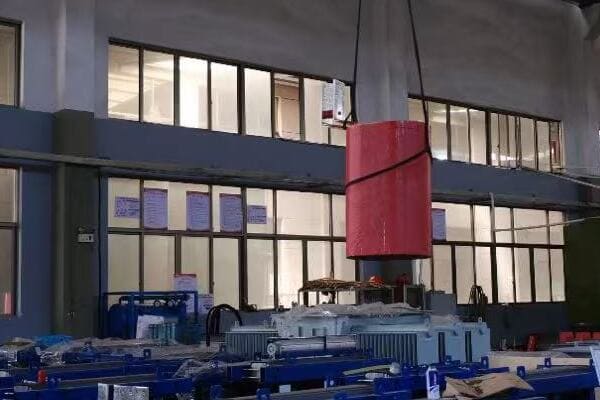
Detailed Transformer Selection Checklist by Project Type
Let's break down the selection process for each project type:
1. Commercial Projects
Key considerations:
- [ ] Noise level: Ultra-low for offices, hospitals
- [ ] Size: Compact for space-constrained areas
- [ ] Cooling: Prefer AN for quiet operation
- [ ] Protection: IP23 for indoor use
- [ ] Insulation: Class F for standard commercial environments
- [ ] Efficiency: Meet or exceed local energy standards
I once worked on a project for a high-end office complex where noise was a critical factor. We selected an ultra-quiet AN-cooled transformer with additional sound dampening features. This attention to acoustic performance was crucial for maintaining the premium work environment the client desired.
2. Industrial Applications
Essential features:
- [ ] Cooling: AF for high loads and harsh environments
- [ ] Overload capacity: High, to handle motor starts and peak demands
- [ ] Protection: IP54 or higher for dusty/dirty conditions
- [ ] Mechanical strength: Enhanced for vibration resistance
- [ ] Monitoring: Advanced systems for predictive maintenance
- [ ] Efficiency: Focus on performance under variable loads
3. Renewable Energy Projects
Specific requirements:
- [ ] Bi-directional power flow capability
- [ ] Corrosion resistance: For outdoor/coastal installations
- [ ] Cooling: ONAN/AF depending on location and load profile
- [ ] Certification: IEC 60076-16 for wind turbine applications
- [ ] Efficiency: High at partial loads (especially for solar)
- [ ] Smart features: Integration with renewable energy management systems
4. Budget-Conscious Projects
Cost-effective considerations:
- [ ] Focus on Total Cost of Ownership (TCO)
- [ ] Energy efficiency: Balance initial cost with long-term savings
- [ ] Maintenance: Consider long-term service requirements
- [ ] Scalability: Option for future capacity increases
- [ ] Standardization: Use common designs to reduce costs
- [ ] Warranty: Evaluate coverage and terms
Here's a comparison table summarizing key features for different project types:
| Feature | Commercial | Industrial | Renewable | Budget-Focused |
|---|---|---|---|---|
| Cooling Method | AN preferred | AF common | Application-specific | AN if suitable |
| Noise Level | Ultra-low | Less critical | Site-dependent | Standard |
| Protection Rating | IP23 typical | IP54 or higher | Location-based | Application-based |
| Overload Capacity | Moderate | High | Variable | As needed |
| Smart Features | Basic | Advanced | Integration-focused | Cost-effective options |
| Efficiency Focus | Steady-state | Variable load | Partial load | Lifecycle cost |
In my experience, this checklist approach has been invaluable in ensuring all critical factors are considered. I recall a complex industrial project where we used a similar checklist. It helped us identify a potential issue with harmonic distortion that we might have otherwise overlooked. By addressing this early in the selection process, we avoided costly retrofits later.
The importance of future-proofing your selection cannot be overstated. In a recent utility upgrade project, we included estimated load growth in our calculations. This led us to select a transformer with slightly higher capacity than immediately needed. Within two years, this foresight proved invaluable as the area experienced unexpected rapid development.
Environmental considerations often play a crucial role. I worked on a renewable energy project in a coastal area where we had to carefully consider corrosion resistance. The checklist prompted us to specify enhanced protective coatings and sealed designs, significantly extending the transformer's expected lifespan in the harsh environment.
For budget-conscious projects, the focus on total cost of ownership is critical. In a recent educational institution project, we conducted a detailed TCO analysis comparing different transformer options. This approach led us to choose a more efficient unit that, while more expensive initially, offered substantial energy savings over its lifespan, aligning with the institution's long-term financial planning.
The trend towards smart grids is influencing transformer selection across all project types. In a recent commercial development, we included smart monitoring capabilities as a checklist item. This led to selecting transformers with advanced sensors and communication interfaces, enabling real-time monitoring and predictive maintenance, aligning with the building's smart energy management system.
Lastly, always consider the specific regulatory environment of your project. In a recent international project, we had to navigate different standards across multiple countries. Our checklist included a comprehensive regulatory compliance section, ensuring that the selected transformers met all local and international requirements, avoiding potential legal and operational issues.
This project-based selection checklist serves as a powerful tool to ensure you've considered all crucial aspects in your transformer selection process. By methodically working through each point relevant to your specific project type, you can confidently choose a transformer that not only meets your current needs but is also well-suited for future demands. Remember, the right choice balances technical requirements, environmental considerations, regulatory compliance, and long-term operational efficiency. Take the time to thoroughly evaluate each aspect – it's an investment that will pay dividends throughout the transformer's operational life.
Conclusion
Selecting the right dry type transformer involves carefully evaluating project-specific needs, from commercial to industrial and renewable applications. Consider factors like load profile, environment, efficiency, and long-term costs. Use the provided checklists to ensure a comprehensive selection process that balances performance, reliability, and value over the transformer's lifetime.
Still unsure which transformer fits your project?
📩 Contact us for a free technical consultation or request a custom quotation.


